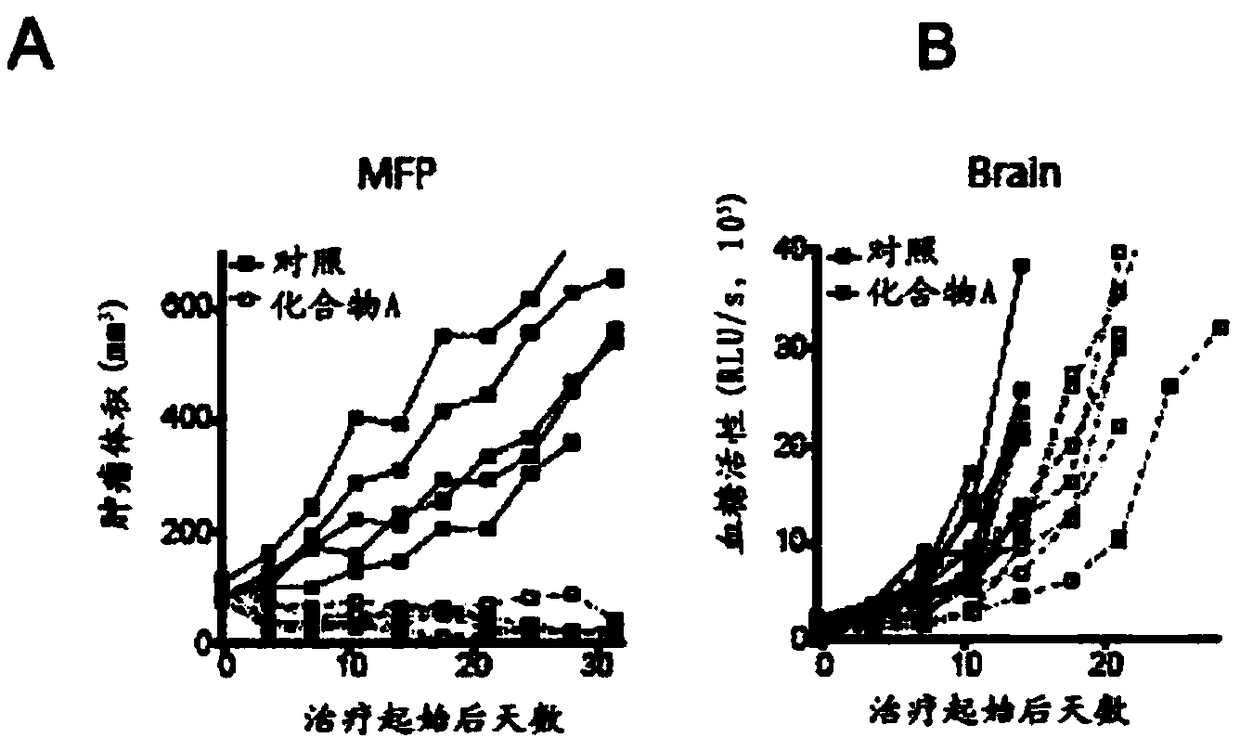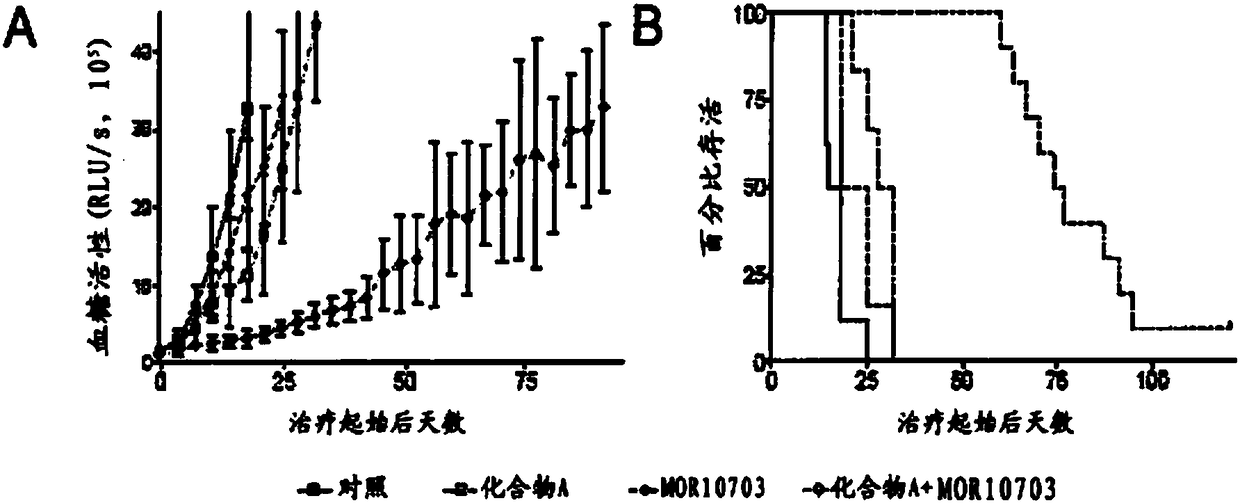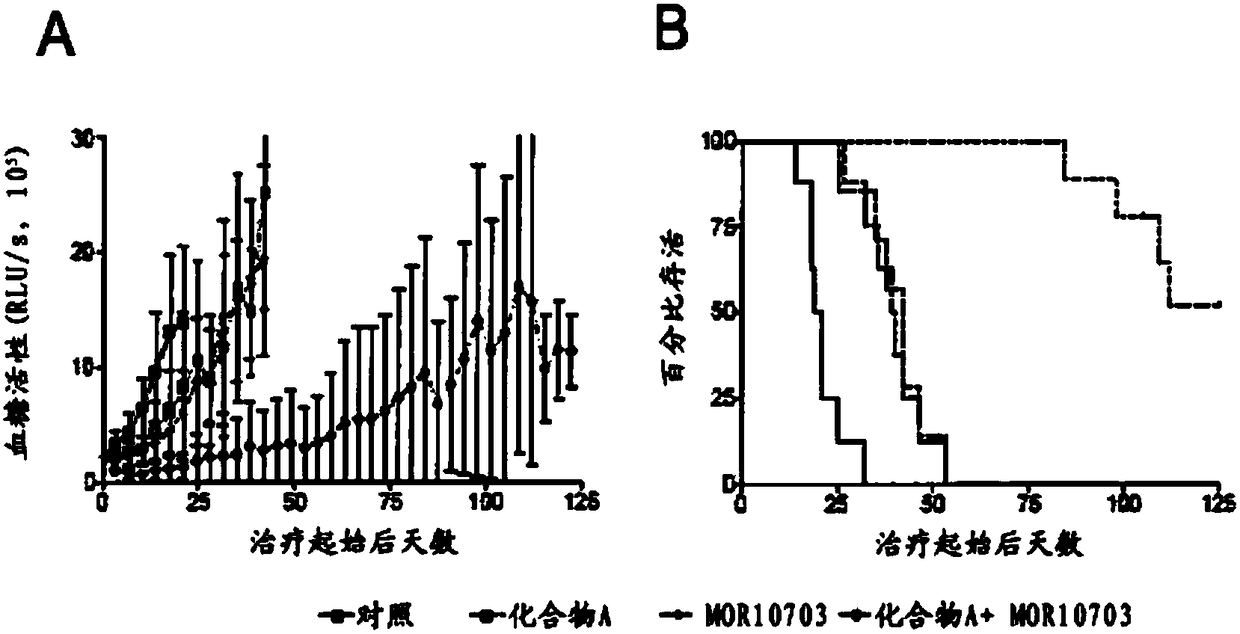Treatment of breast cancer brain metastases
A technology for breast cancer and brain metastases, applied in the field of Her3 antagonists and phosphatidylinositol 3 kinase inhibitors, which can solve the problems of limited treatment options and inability to control brain metastases
- Summary
- Abstract
- Description
- Claims
- Application Information
AI Technical Summary
Problems solved by technology
Method used
Image
Examples
Embodiment 1
[0412] Example 1: Differential response of HER2-positive breast cancer to PI3K inhibition when grown in MFP or brain
[0413] 5-(2,6-Di-morpholin-4-yl-pyrimidin-4-yl)-4-trifluoromethyl-pyridin-2-ylamine (referred to herein as "compound A") is a potent and specific A broad-spectrum class I PI3K inhibitor active against breast cancer cells harboring HER2 amplification and oncogenic PI3K catalytic subunit alpha (PIK3CA) mutations. We compared the efficacy of Compound A against the same human HER2-positive breast cancer cells grown in nude mouse MFP or in the brain parenchyma. The three breast cancer cell lines examined included HER2 amplified BT474, HER2 amplified and PIK3CA mutated (E545K) MDA-MB-361, and PIK3CA mutated (H1047R) T-47D cell lines. While Compound A caused regression of HER2- or PI3K-driven breast tumors grown in MFP, established brain metastases were resistant to treatment ( figure 1 A and 1B). Tumor tissues collected 2 hours after the last dose of Compound A s...
Embodiment 2
[0414] Example 2: Resistance of HER2-positive breast cancer cells requires sustained influence from the brain microenvironment
[0415] We extended our investigation into breast cancer BM resistance to PI3K inhibition by asking whether breast cancer cells require persistent influence from the brain microenvironment. We isolated breast cancer cells (termed BT474-Gluc-BR) after dissociating brain metastases. After culturing in vitro for one week, most of the living cells were identified as cancer cells by GFP. These "brain microenvironment exposed" breast cancer cells were similarly sensitive to Compound A in vitro as the parental cells. This data demonstrates that the brain microenvironment did not induce permanent changes in breast cancer cells, nor was there preferential growth of Compound A resistant clones in the brain. Instead, breast cancer cells must receive continuous support from the brain microenvironment to maintain resistance.
Embodiment 3
[0416] Example 3: MFP and brain tumors have equivalent growth rates
[0417] We first hypothesized that the brain microenvironment induces breast cancer cells to be more proliferative, thereby reducing the ability to slow their growth with targeted drugs. Although fewer breast cancer cells formed tumors in the brain parenchyma compared to MFP, once tumors were established, cancer cells grew at the same rate in both environments.
PUM
 Login to View More
Login to View More Abstract
Description
Claims
Application Information
 Login to View More
Login to View More - R&D
- Intellectual Property
- Life Sciences
- Materials
- Tech Scout
- Unparalleled Data Quality
- Higher Quality Content
- 60% Fewer Hallucinations
Browse by: Latest US Patents, China's latest patents, Technical Efficacy Thesaurus, Application Domain, Technology Topic, Popular Technical Reports.
© 2025 PatSnap. All rights reserved.Legal|Privacy policy|Modern Slavery Act Transparency Statement|Sitemap|About US| Contact US: help@patsnap.com



